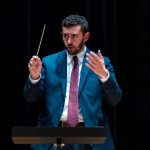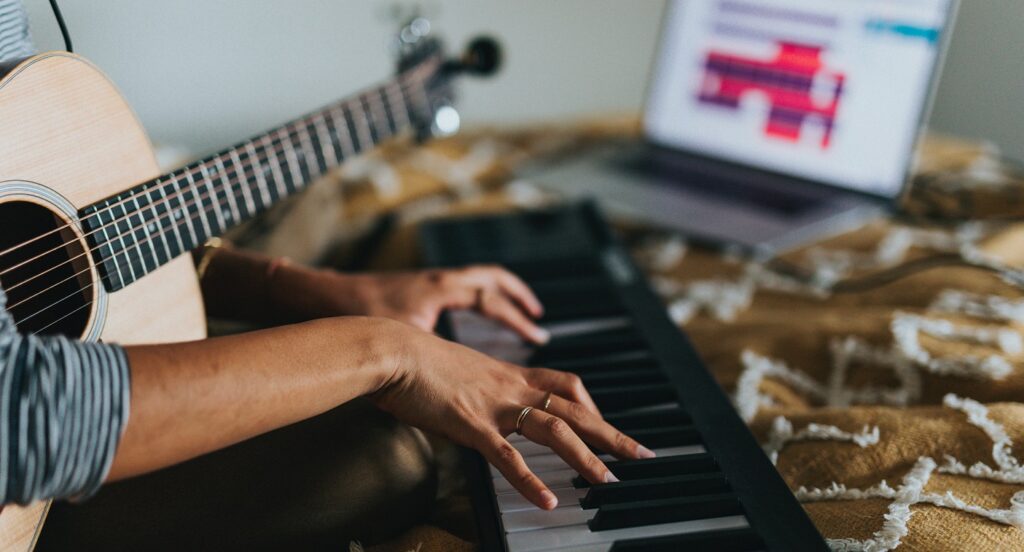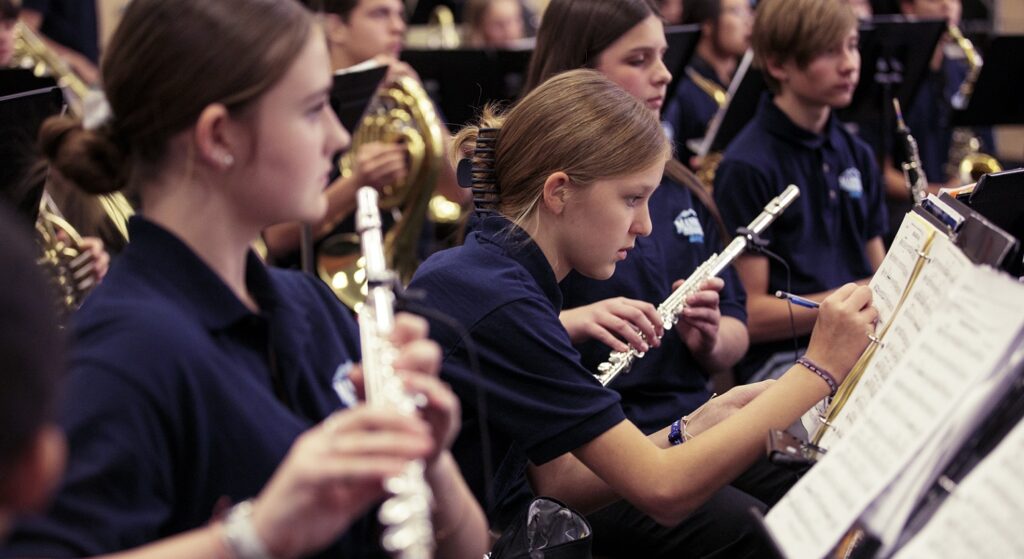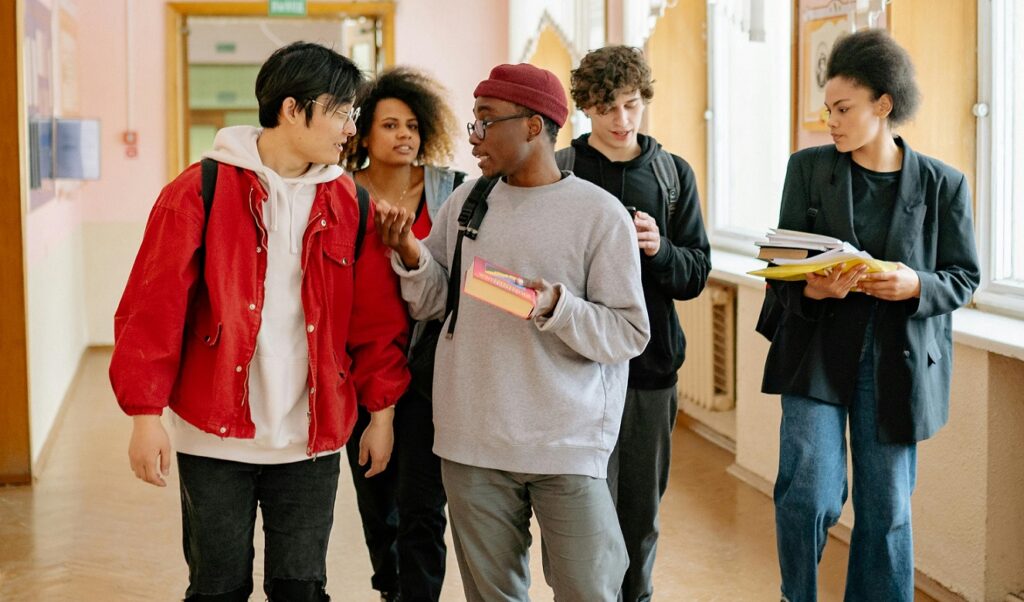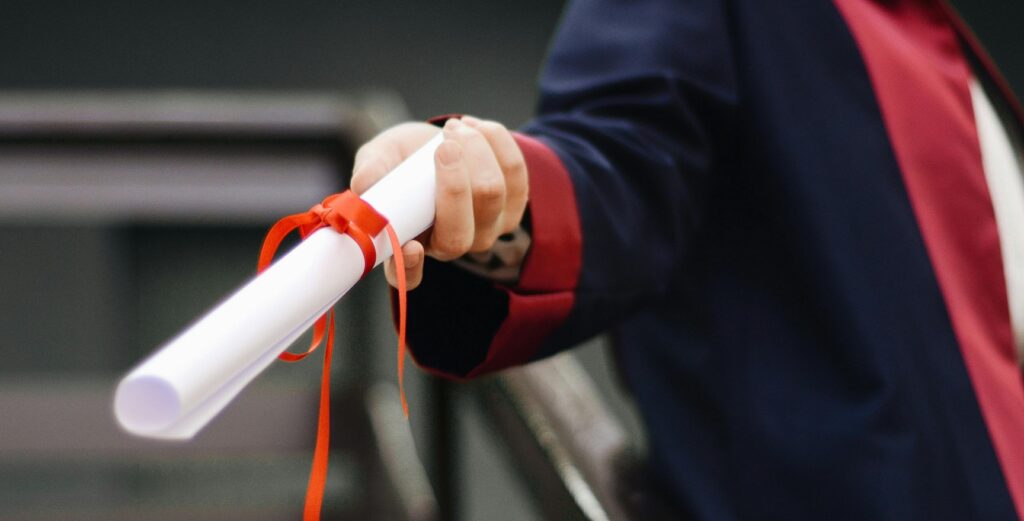Prepare for Spring Concerts
As the New Year begins, if you haven’t thought about your Spring concerts, you better start now! Here are some things to consider as you prepare for your next performances to close out the school year!
Spring is a very busy time for music programs with concerts, large group festivals, honor bands, all-town performances, and musicals. It seems like the list is endless! A lot of music to learn and so little time. First thing you must consider is what you are programming for. This Spring, I have to prepare for everything I listed above, so where do I begin? Like any other performance, programming is the first step.
Before the Performance
What are you programming for? Choosing appropriate repertoire for your event is the most important thing for a successful performance. How many pieces, what styles and genres, duration, rehearsal time, etc. will all influence your programming. Music for each of these events will vary. For example, when I take my band to New York City for a competition, I will not have all my students there and much less preparation time compared to a regular concert cycle. The music I choose for this performance will not be the same as the music that I prepare for our concert in May. The music for our All-Town Band concert in April will include a pop tune as a way to inspire the elementary and junior high students (and entertain their parents) in the crowd. Because of where this concert lands in our schedule, we will also perform a more standard band piece that we have already done before, and that’s okay! We will have a new audience, so no harm in getting another performance on something the students enjoyed playing! Whatever performances you have, plan to be efficient and trust that you know your audience!
THE YAMAHA EDUCATOR NEWSLETTER: Join to receive a round-up of our latest articles and programs!
How many concerts are you doing? Everyone’s performance schedule is different. I used to put on two concerts a year — one in December and one in late May/early June. In between, we prepare for our state festival with a completely different program, but we never played for a “home crowd.” Now, my Symphonic Band performs three concerts a year and my Honors Wind Ensemble performs four. That means this Spring we will perform two concerts — one in March and another in May. Your schedule may be different but consider what you want to present to an audience in your Spring concert(s). Will your concert be a pops concert? Will it be a concert of standard repertoire? Will you have a guest composer and do a full program of their works? You know your audience the best, so make sure you give them a concert they will want to hear!
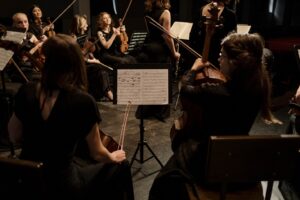
Implement Chamber Music
I always have my students study chamber music. You’re probably thinking, “Why are you spending time on chamber music when there is so much more to do in the Spring than the Fall?” Trust me, this small unit will have a positive impact.
Why do I do it? Because I know the benefits of chamber music. Additionally, it is something students can do alone. Each December, after our Winter concerts, I go to the Midwest Clinic for the most rejuvenating and inspiring time of my year. However, this means that I will be out my classroom and must create hours of sub plans. You might have the same question that my students have: “Why don’t you just give us a study hall?” My answer is an emphatic no. Do you get a study hall until winter break after your math exam? You might think I’m a mean teacher, but we keep working until the very end of the year!
While I’m away, students work in chamber groups, created by me, to prepare for a small performance for their midterm exam just a few weeks later. This gives students a great opportunity to collaborate, make musical decisions and rehearse on their own. Having played in a brass quintet throughout my undergrad (shout out to The Ambrassadors), I know the immense benefits that come with playing in a chamber ensemble. Independence of parts, listening, internal pulse, tuning, balance, etc., the possibilities for growth are endless, and they will transfer to your large ensemble!
True story: One day, my students came in and asked if we were going to have chamber ensembles, and when I said yes, one of them yelled, “Yay!” Trust me, you need to consider implementing chamber music into your program, even if you think you don’t have time.
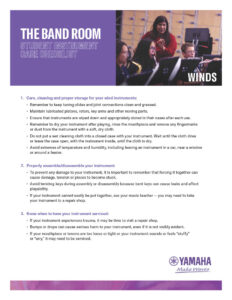
Download this Yamaha – Winds Instrument Care Checklist.
Types of Spring Performances
Music in Our Schools Month: March is Music in Our Schools Month, and it’s a great opportunity to emphasize the importance of music education in your school. Consider having a concert to highlight the importance of music education and the experience it gives your students every day. Remember to invite administration and ask if they will welcome the audience as an introduction for the concert. Maybe you can even have them participate in or conduct a piece! For my groups, it is an opportunity to give a performance before we bring it to a large group adjudication.
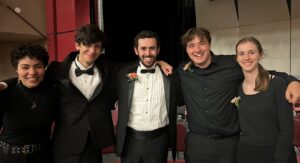
State Contest: Speaking of adjudication, Spring is a busy time for state contests. Like any performance, you want to put your best foot forward for your state contest. Some states require that you program from a prescribed list. Make sure you are aware of and follow the rules set in place by your state’s contest.
Here’s a suggestion that may be controversial — If you can select your own repertoire, it’s okay to program music for a festival that the adjudicators might not know! Don’t be afraid to select a newer piece by a lesser-known composer. Of course, check your state’s requirements for programming before making this decision. It doesn’t matter what the piece is or who it is by — what matters is how your group sounds while playing it. Bonus: The adjudicators and the audience of other band directors will hear a new piece.
The Rehearsal Process
How long do you have? For my Honors Wind Ensemble, this concert cycle has 10 weeks to prepare our next performance — the longest we have had so far this year! Phew, I can breathe, right? No, because there’s more than just that one performance that we must prepare for! But I can’t complain. As I mentioned before, I did this to myself. All educators will have different schedules and timing for their concerts. As you begin your rehearsal process, consider how long you have until the performance so you can effectively plan your rehearsals.
Planning Rehearsals: With about 10 weeks before our next performance, I know when I can schedule things like spot checks, sectionals, etc. I rely on students to have ownership in rehearsal preparation all year, but more so during the Spring. Students have more sectionals to schedule outside of rehearsal to be prepared for performances and recordings. By knowing the schedule and calendar, they can plan their sectionals accordingly. Create a weekly rehearsal calendar so students know which pieces you will work on, in what order and which measure numbers. This will keep your students on top of what to work on, and it will keep you honest!
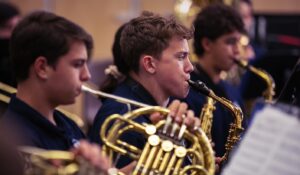
Students also must understand the amount of time until the next performance so they can plan their individual practice schedule. I typically give students a deadline to learn their parts, more specifically the notes and rhythms. After that time, they know that I may or may not do a spot check on their individual parts. Does this mean I ignore notes and rhythms during rehearsals? No, but those will get worked out most easily with time, and I want to get into the music itself. You can learn more about some of my rehearsal techniques in my article, “8 Unconventional Rehearsal Tips.”
Bring in a Guest: Any time you have a performance coming up, especially a state contest, it’s helpful to bring in someone to work with your group. They will probably say the same things you’ve been saying, but this time your students will hear it. If time is tight, send a recording of your group to a trusted colleague to provide feedback. If you can’t find anyone, reach out to me, I’m happy to help! Even better, bring me out to work with your group so I can reach my goal of going to all 50 states.
Record Rehearsals: Record your rehearsals frequently, if not every day, because you may miss hearing some things from the podium. When you listen back, the recording may reveal a lot of issues that you were unaware of! I have often posted recordings of rehearsals and full run-throughs for students to listen to as an assignment. They can’t argue with the truth of a recording. I have also used recordings to make a list of glaring problem spots and give them to students to mark in their parts. And on the rare occurrence when a student is missing from rehearsal (never happens, right?), you now have a way for them to make up for missing rehearsal. Nothing is better than sitting in rehearsals, but at least this way students aren’t lying on a practice log.
Project Your Score: I recently started doing this using my iPad. This could also work with a document camera if you have one available. I had heard and seen others doing this, but it wasn’t until I noticed two students looking at my score that I thought, “Hmm, this might be something they’re interested in seeing.” Actually, they weren’t that curious about the music; they liked making fun of my markings. “I like the big crescendo you drew,” one smirked. No, they didn’t.
However, now students can see my marks in my scores by projecting it on the screen behind me. Bonus: The lowered screen blocks the clock, so students can’t try packing up five minutes before the bell. By seeing the score, they can pick up on melodic motifs, harmonic progression, form and even see silly little comments I write to myself (some I never intended for people to see because they can be ridiculous) about what is going on musically. Students might make fun of me (what’s new?), but they’re understanding music at a deeper level. Who’s laughing now?
During the Performance
What to wear: This seems to be a hot-topic debate for programs around the country. What is your concert attire? Do you consider black leggings to be black pants? What is the right length for dresses or skirts? Long tie or bow tie? Jacket or no jacket? All black or black and white? You can go on forever about this with your colleagues and answers will vary. It all comes back to the kind of performance you are planning.
In my program, students have different concert attire for various occasions. Our most formal concert attire for most of our concerts and state contests includes tuxedos and full-length dresses. Do students like it? I don’t know because they complain about any attire that has buttons on it. My students have all black clothing that we wear on some occasions, but mostly for recorded videos.
There are times where students can wear whatever they like (what?!), but my one rule is that they must “look nice.” I found that “Sunday best” doesn’t mean anything to many students. To give them a clearer idea of what to wear to “look nice,” I give them different scenarios, such as going out to dinner for your grandparent’s birthday, a casual wedding, family photos, etc. We have used this dress code for a few more casual performances, mostly at graduation. A lot of students want to hang out afterward to take pictures and celebrate with their classmates who have just graduated. Now think of how weird they might feel if they were taking those pictures in a tuxedo.

One more note on concert attire. We all know that students feel more comfortable in clothing that fits their gender identity. Any concert attire you choose, avoid assigning gender to clothing. We give our students two options. We don’t say, “Boys wear this, and girls wear this”; instead, we say, “You will wear option 1 or option 2.” This very small act of changing our language around concert attire may seem insignificant, but it is greatly significant. Some students have both concert attires. We want to have the look of a formal tuxedo and gown, but we don’t care who is wearing what, just as long as it’s all the same.
Deportment: Anywhere I go with students I give the same speech: “We are about to walk into [wherever] and I expect you to be on your best behavior. You are not only representing yourselves, but you are representing your school, your town, your state and, most importantly, my reputation. Be respectful, follow the rules and be kind.” Now, you might not agree that the most important thing is my reputation; that statement sounds selfish. You’re right. The thing I care about most is how they represent themselves, but they’re young and might not think, “This looks bad for me,” because they know they may never see these people again. However, they will think twice about doing something if they think, “This will look bad for Mr. Duras,” because I will see those people again.
Our reputation as a group is something I emphasize and something we take pride in. The most important advice I can give you is to teach your students to treat others with kindness. This goes a long way with the people you see the most in your school, and the ones who work behind the scenes to make sure your students have good experiences. That’s right, I mean folks like the custodians and the bus drivers — the people who your students might not realize have such a large and positive impact on the experiences they get to have.
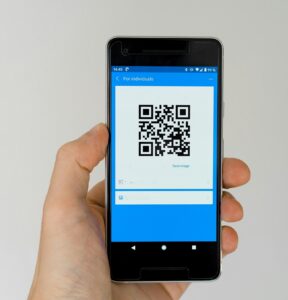
Programs: Depending on where you are in your career, you may have already made up your mind about what to do about programs that are handed out to the audience. There are a lot of differing opinions on this. And while I have your attention, I’m going to give you mine. You understand your audience better than anyone, so do what works for you. QR-code programs are a great way to save time and paper. Additionally, if you make a mistake, it’s much easier to update a digital file than reprint 100 programs.
Personally — and you can call me old-fashioned being born in 1995 and all — I prefer having a physical copy of a program. Depending on the performance, we might do a QR code, for example at our All-Town Band Concert that has all students 5–12 perform. That’s a lot of paper if we printed programs. However, when our audience is in a concert setting, I prefer them to not have the opportunity to click on that text message that came in while they were looking at the digital program, or open their social media app and accidentally click on a video with the volume on max. Anyone else get second-hand embarrassment when that happens? We’ve all been there.
Transitions: If you have a concert with more than one group or with significant set changes, plan ahead and get students involved to make things go smoothly. At a recent concert, we had a pretty big set change, and when we practiced it — even after telling the students exactly what to do — it took us 15 minutes in rehearsal! Ugh, how will we ever pull this off? We had a very constructive discussion about what went wrong and where we could save time. During the concert, we did it in a third of the time — I was so proud of them. Teamwork makes the dream work! Although it’s great to have a lot of students willing to help out, too many cooks in the kitchen will spoil the soup.
Talking to the Audience: The amount you say to the audience also varies from person to person. For me, it depends on what needs to be said. I won’t talk between pieces unless I feel the need to say something. Sometimes it will be elaborating on the music beyond the program notes or talking about the experience we had by working with a composer or an activity that enhanced our experience with the piece. It also depends on how my jokes are received. Where else am I going to get an audience that is forced to listen to my jokes?
Sometimes you need to give the audience a break to digest the music. For example, a couple years ago, we performed Steve Danyew’s “Into the Silent Land,” an incredibly powerful and emotional piece written in response to the tragedy at Sandy Hook Elementary School in Newtown, Connecticut. Before the performance, I spoke about what this piece meant to me. Afterward, I decided to take a moment before moving on to our next piece. I didn’t address the audience, which needed time to process what they had heard and to sit with it for a moment without hearing from me.
Before our last piece at every performance, I always take a moment to thank the audience for joining us and anyone else who has been important in the preparation of the concert. I also use that time to do a short PSA encouraging the audience that if they liked what they heard tonight to share their excitement and praise with members of the school board and school administrators like principals, curriculum coordinators, superintendents, etc. — because these people can’t make every concert (there might be another school activity that night), but they deserve to hear how the concert made the audience feel.
Other Things to Consider
Titling your concert: For the past couple years, I’ve given titles to my concerts; instead of calling them “Winter Concert” or “Spring Concert,” I’ve come up with names like “New Americana,” “MARCH,” “Connections” and “Voices.” Are they incredibly creative? No, not really, but it gives a theme for the music being performed, and it makes me more intentional with my programming. I believe it enhances the experience for the audience as they learn about and make their own connections to the music.

Pre-Concert Talk: Inspired by some major orchestras, last year I decided to try something new for our final concert. I gave a pre-concert talk on the music that was going to be performed that night. I didn’t really know what to expect, and when people asked me what I planned to do during this talk, my answer was, “I have no clue.” All kidding aside, I wanted to discuss some of the music in a more in-depth and personal way with the audience — a way to bring the program notes to life. I was joined by four student soloists, and I asked them questions that I gave them in advance. It was interesting to hear their perspective on the music and share with the audience what the rehearsal process was like. Despite people having no idea what to expect (me included), it was well-received and proved to be a unique way to educate the audience. I plan on doing it again, and I encourage you to give it a shot, too!
_______________________________________
I hope some of these chaotic thoughts can help you get ready for your Spring performances, or at least recognize that you are not alone! Take what you like (feel free to reach out if you have any questions), leave what you don’t like (feel free to not reach out if you’re going to argue with me — I’m sensitive), but trust yourself and best of luck on your performances!
Top photo by KUDOSSTUDIO / Adobe Stock









